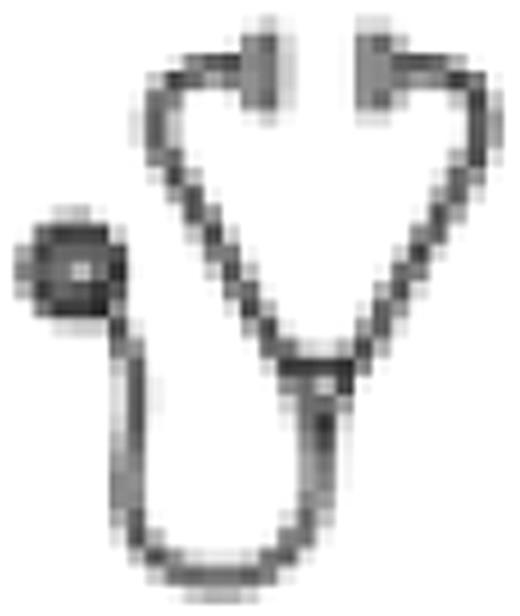Abstract
Abstract 2740
Initial response to induction chemotherapy is a significant predictor of outcome in leukemias. Data from MRC10 AML trial demonstrated that patients (pts) with ≤15% blasts at the end of induction I (EOI1), as determined by morphologic analysis, had a similar outcome as those in morphologic complete remission (mCR, <5% blasts), whereas those with >15% blasts have a significantly diminished survival. The COG Phase III AML protocol AAML0531 has enrolled 968 eligible pts with de novo AML as of March 31, 2010. Those with >15% blasts by morphologic assessment (persistent disease, mPD) at EOI1 are considered a high-risk cohort; those with 5% to 15% blasts (partial remission, mPR) were included in the standard-risk group. As part of AAML0531, pts choose to enroll on a biology study to evaluate treatment response by multidimensional flow cytometry (MDF) after 2 courses of therapy (EOI1 and EOI2). Here we directly compared the morphologic bone marrow (BM) response at EOI1 in pts with mPR or mPD with that assessed by MDF and correlated the remission status at EOI1 to the mCR rate at EOI2. Of the 900 pts with evaluable response data at EOI1, 628 (70%) entered mCR; 104 (12%) had mPR; 126 (14%) had mPD; and 42 (5%) either died (n=19) or had refractory CNS AML (n=23). All pts, regardless of their blast %, were eligible to receive the second course of induction chemotherapy per protocol. Of those with mPD at EOI1 and evaluable data by EOI2, 65 (59%) entered mCR; 1 died; and 44 (40%) had mPD. At EOI1, 180 pts did not enter mCR (80 had mPR, and 100 had mPD). MDF evaluation of those 180 BM specimens showed that 74 (41%) had no evidence of disease by MDF at EOI1. Of those 74 pts, 69 (93%) entered mCR at EOI2. In contrast, mCR at EOI2 for those with any level of disease by MDF at EOI1 was 49% (p<0.001). When a blast threshold of 5% by MDF at EOI1 was used to correlate with EOI2 response, those with 0.5% to 4.9% blasts at EOI1 had an EOI2 mCR rate of 68% compared to 41% in those with >5% blasts by MDF (p=0.013). Because they are in different risk groups, pts with mPR and those with mPD were evaluated separately for the presence of disease by MDF. Median blast % in pts with mPR was 7% (range 5%-15%). Of the 76 pts with mPR at EOI1 with an evaluable EOI2 response, 19 (25%) did not enter mCR at EOI2. At EOI1, morphologic BM response was compared to that by MDF. Of the 80 pts in mPR at EOI1, 43 (54%) had no evidence of AML by MDF; 17 (21%) had <5% blasts; and 7 (9%) in mPR had >15%. In pts in mPR who did not have AML by MDF (n=43), 39 had remission status available by EOI2: 34 (87%) entered mCR, and 5 (13%) had refractory disease (>5% blasts). Of the latter 5 patients, 4 had no evidence of disease by MDF. We subsequently evaluated BM status of the pts with PD by MDF at EOI1 and EOI2. Of those with mPD at EOI1, 62% entered mCR at EOI2. Of the 100 pts with mPD at EOI1 and MDF data for response evaluation, 31 had no evidence of disease by MDF, and all 25 with evaluable response by EOI2 entered mCR. In the remaining 69 pts, the presence of AML by MDF ranged from 0.05% to 95% (median 22%). Patients with mPD at EOI1 with any level of disease by MDF had a mCR rate of 41% at EOI2. Of the 16 pts with mPD and 0.5% to 4.9% blasts by MDF at EOI1, 14 had an evaluable EOI2 response: 11 (79%) entered mCR; 2 (18%) experienced treatment failure at EOI1; and 1 suffered extramedullary relapse. When the EOI1 evaluation was limited to the 53 patients with '5% blasts by MDF, the mCR rate at EOI2 was 30%. This study demonstrates a substantial discrepancy between morphologic and MDF assessments of induction BM specimens and highlights the need to implement MDF for accurate evaluation of remission status. We further demonstrate that a blast threshold of 5% by MDF at EOI1 may be an accurate predictor of response to the second course of therapy.
No relevant conflicts of interest to declare.

This icon denotes an abstract that is clinically relevant.
Author notes
Asterisk with author names denotes non-ASH members.

This feature is available to Subscribers Only
Sign In or Create an Account Close Modal